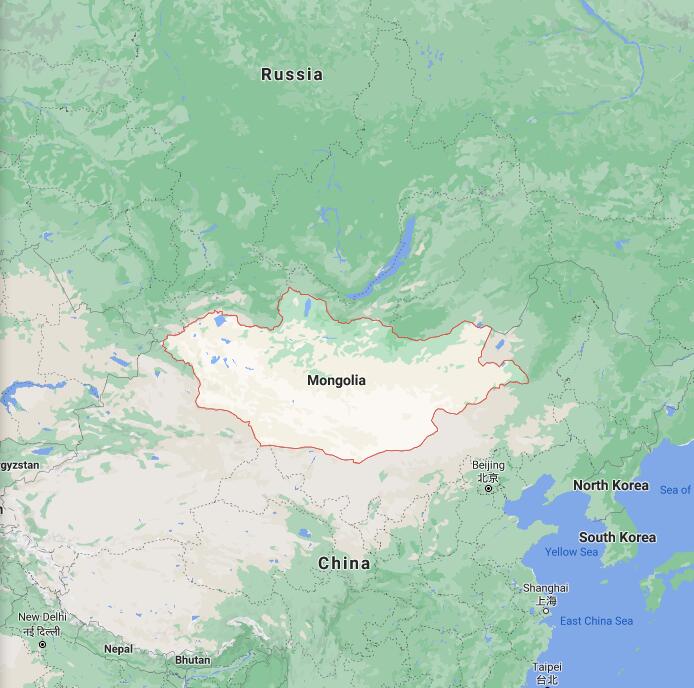
In 2003, Mongolia was a large landlocked country located in East Asia. It had a population of around 2.7 million people, primarily speaking Mongolian and Russian. According to computergees, the capital city was Ulaanbaatar, which is home to the Government Palace and several other important government buildings and monuments. The economy relied heavily on its pastoral sector with cashmere being the main export item. Tourism was also popular due to its stunning grasslands, vibrant nomadic culture and traditional festivals such as Naadam. In addition to its natural beauty, Mongolia had a rich cultural heritage with traditional music, cuisine and art that blended Mongolian influences with those from China and Russia. Despite its many challenges including poverty and political unrest in 2003, Mongolia remained a vibrant country that held great promise for its future generations.
Yearbook 2003
Mongolia. According to Countryaah.com, Mongolia Independence Day is December 29. A disputed land privatization law came into force on May 1. More than 12 million hectares of state-owned land will be sold until June 2005. Nearly 40% of the country’s households applied for land, but thousands of families claimed that the privatization risked driving them off the farm because they were too poor to be able to buy the land they have long cultivated or where they have had their animals. Poor farmers and animal owners from all over the country demonstrated in vain in the capital Ulaanbaatar before the law was passed. Other critics also felt that the law would benefit large companies.
Following the example of the Soviet Union, the People’s Republic began to collectivize the economy to crush the power of the feudal nobles and the Buddhist priests. In 1936-38, the Mongol regime carried out extensive purges within the party and military, and sentenced a large number of leaders to death.
In the 1930s, the party conducted a campaign that resulted in the destruction of 750 monasteries and the execution of about 1,000 monks. Mongolia’s population growth had been in the stumps for centuries, when a large proportion of the male population had converted to Buddhism.
In 1939, Japan invaded northeastern Mongolia in the direction of Siberia, but the Mongols stubbornly resisted until Soviet reinforcements came. The Japanese defeat was a severe blow to the Berlin-Tokyo axis. Mongolia and the Soviet Union fought together during the campaign carried out in Outer Mongolia and Manchuria during the last two weeks of World War II.
As part of the Yalta agreements, Chiang Kai-shek agreed to conduct a referendum in Mongolia. The result was overwhelming in favor of independence, but was not recognized diplomatically due to disagreements over border crossing. It was not until 1961 that Mongolia joined the UN.
In 1960, Ulan Bator accused the Chinese government of assaulting the Mongolian population and of seeking to expand into Mongolia. In the early 1970s, repeated clashes occurred at the border and 2,000 Chinese were thrown out of Mongolia.
Tensions continued until 1986, when the Chinese Deputy Foreign Minister visited Mongolia, where diplomatic and trade relations were resumed. In 1987, the Soviet Union announced that it would withdraw parts of its military forces from the area as an expression of goodwill for stabilizing the region.
In March 1988, Mongolia and China signed the first border treaty to regulate the 4,655 km long border between the two countries. During the Mongolian Foreign Minister Tserenpyliym Gombasuren’s visit to Beijing a year later, relations between the two countries completely normalized. It was the first official Mongol visit to China in 40 years.
As part of the Russian “perestroika”, Moscow declared in 1989 that in 1990 it would withdraw three-quarters of its troops from Mongolia. Shortly thereafter, both governments agreed to withdraw all Soviet soldiers and all military equipment from Mongolia by the end of 1992.
At the same time, the Mongolian government acknowledged that social and economic reforms were insufficient. The leading party implemented democratically oriented reforms in its internal electoral rules and rehabilitated a number of leaders who had been purged in the 1930s.
Republic of Mongolia Brief Guide
According to AbbreviationFinder, the Republic of Mongolia is located in Asia between Russia and China. For the most part, the land covered by Aro is the least populated state in the world. Mongolia is the second largest landlocked country in the world after Kazakhstan.
Food & beverage
Drinking tap water in Mongolia is strictly forbidden. All water and beverages must be industrially bottled. Salads and vegetables should also be rinsed with bottled water. Heated or tablet-purified water can be drunk. The food should be heated or cooked. Mongolian staple food is meat and dairy products. The food is usually simple and not very hotly seasoned. Typical dishes include steamed meat-filled ravioli, noodle-lamb soup and fried meat pies. Mongolians drink a lot of tea, mostly with milk and sometimes also with butter.
Fauna and flora
Due to low water supply, Mongolia mostly grows dry desert plants. However, there is a thin coniferous forest zone on the other side of the country. Coming from north to south, the vegetation changes in a harsher direction, eventually going into desert vegetation. Mongolian fauna include strictly protected snow leopard, Mongolian wild horse (przewalski horse), wild camel, Asian wild donkey and saiga antelope.
Security
Mongolia is a fairly safe country. However, it is good for everyone to exercise general caution and avoid moving at night on the streets of the capital, Ulaanbaatar. Street crime occurs. Crimes against foreigners are mainly pickpocketing and kidnapping, which may occur in particular on public transport, at Ulaanbaatar International Airport and in areas favored by foreigners.